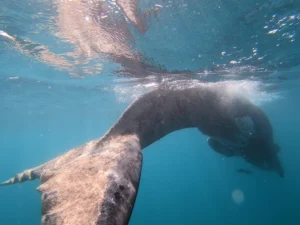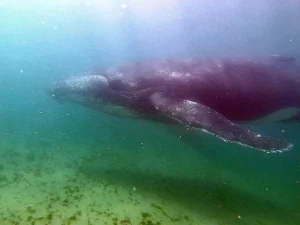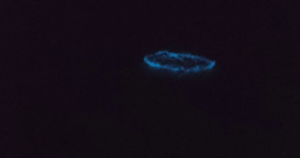We love all sharks, but small, inquisitive ones ‘dressed in pyjamas’ definitely get a bit more love from us. Pyjama sharks, also known as striped catsharks, are a common sight during our Cape Town snorkeling experiences and adventure freedives in the kelp forests. They are fairly abundant in the Western Cape’s intertidal zone and are often seen in False Bay. This bottom dwelling species of catshark can be found in depths of a few metres and all the way down to +100m. They seem to prefer rocky reefs and kelp forests over sandy areas.
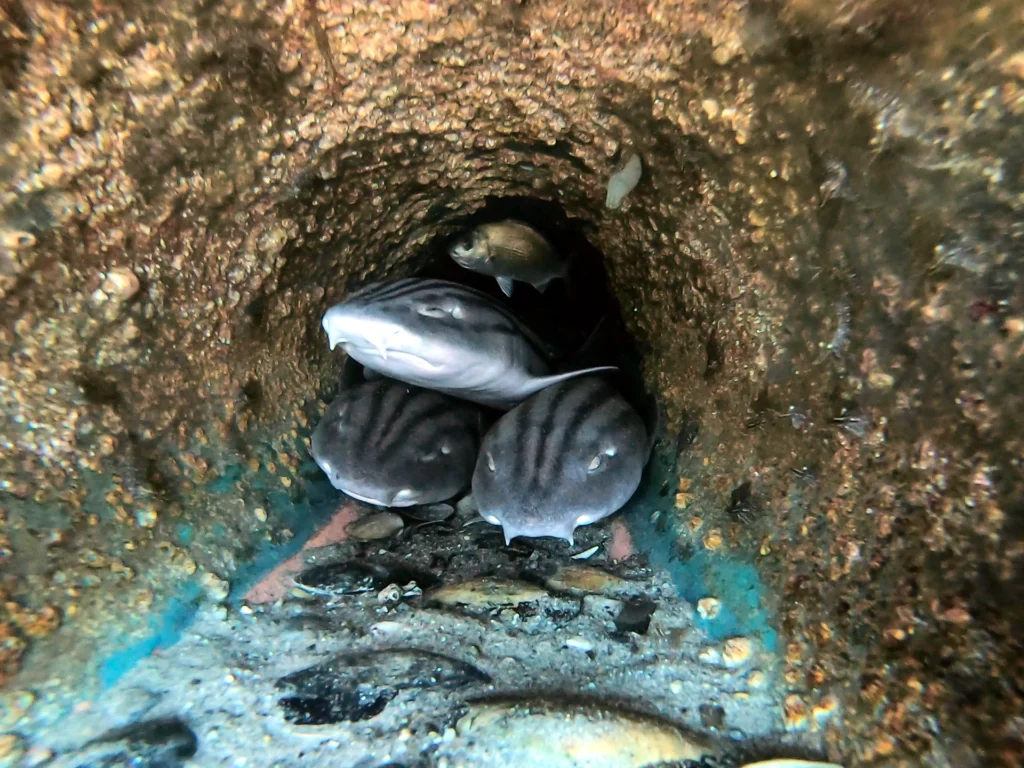
Pyjama sharks are fairly unmistakable with their long dark stripes running along their otherwise grey bodies. They have a short head and a pair of barbels on their snouts. Their dorsal fins are fairly far back on their bodies close to their tails. They can grow to just over a metre in length which is when they start to feel more like a shark to divers. They are partially nocturnal and spend some of the day sleeping in caves and crevices, but judging by the number of sightings of these creatures swimming around during the day, they are also diurnal. They love company and can often be found in groups snuggled up in a hiding spot.
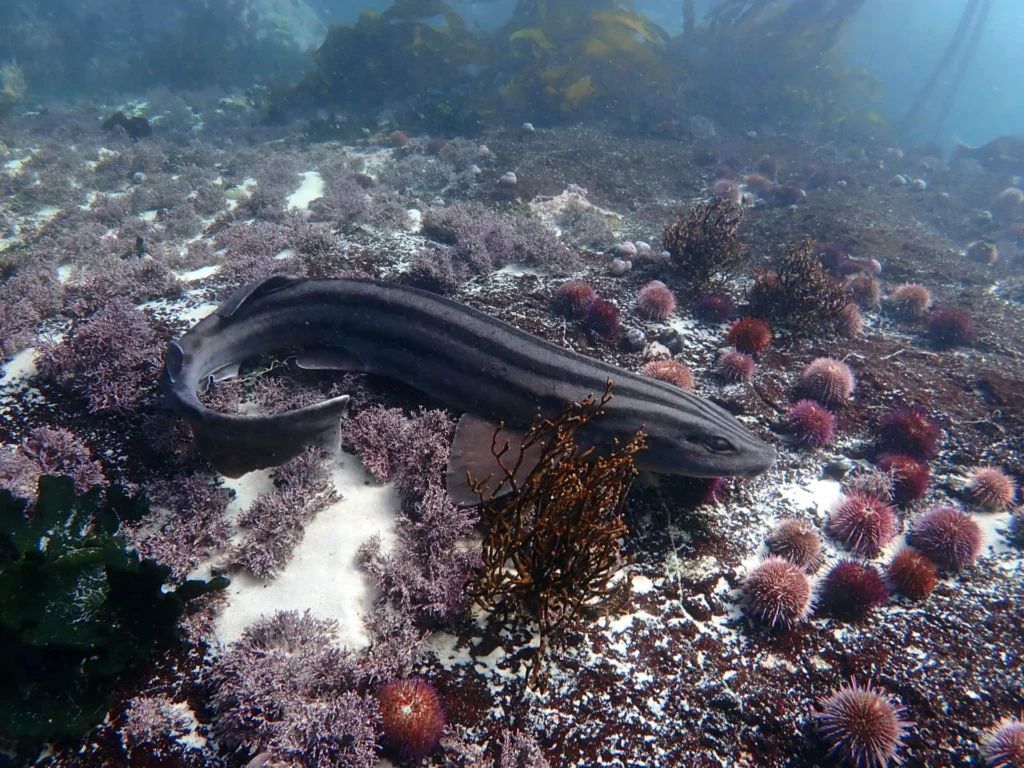
Thanks to the My Octopus Teacher documentary, many people now know what pyjama sharks are and that they like eating octopuses. Other than octopuses they prey on a variety of fishes and invertebrates particularly chokka squid, West Coast rock lobster (crayfish), cuttlefish, anchovies, gurnards, hagfishes, sharks and rays smaller than them. They have cusped teeth which allow them to grip slippery prey like octopuses, but also allow them to crush hard shells of lobsters and crabs. They use a deathroll technique to tear apart prey; they hold their prey in their mouths and then roll multiple times to tear and twist off mouthfuls to eat.
Female pyjama sharks lay rectangular, brown egg cases commonly called a ‘mermaid’s purse’. They lay around two of these per year and attach them to pieces of vegetation or immovable objects. They take around 5 to 6 months to hatch and the baby sharks that come out are about 15cm long. Whelks are known to pierce mermaid’s purses and suck out the yolks. Larger sharks, particularly broadnose sevengill ‘cow sharks’, prey on pyjama sharks. Unfortunately pyjama sharks are caught as bycatch in commercial and recreational fisheries and worst of all are intentionally killed by fishers who regard them as pests. Despite this pressure, pyjama sharks are protected from commercial use, are a no-sale species and were listed as ‘Least Concern’ in the 2018 National Biodiversity Assessment.

